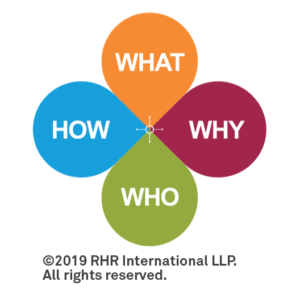What should Leaders and Teams Have in Common?

It’s human nature for leaders to compare themselves to others—including those on their team(s) who report to them—to assess how similar or different their own skills, abilities, beliefs, or attitudes are. We wanted to take this line of thinking one step further to uncover how these similarities and differences play out in organizations and impact leadership.
Research continues to show the numerous positive outcomes associated with more diverse teams, including better decision-making effectiveness and innovation. The leader’s role in this is also critical: leaders of higher-performing teams intentionally seek out different perspectives, ways of thinking, and approaches, according to our own research and experience.
But are there exceptions to this? In a world where diverse and inclusive leadership take the crown (and we agree), are there one or two personality characteristics, values, or behaviors that, when shared among team members and leaders, are beneficial to the leader’s effectiveness and team performance overall?
To gain insight into this question, we analyzed data from 29 leadership teams1, including input from team members’ and leaders’ personality and values assessments (across 28 different scales), as well as each team’s responses to RHR’s Senior Team Effectiveness Survey. While our prior research on top teams has identified several leader behaviors as key drivers of team performance, for this research, we focused on the team’s view of the leader’s effectiveness specifically.
The majority of our results show that the more effective the leaders, the more likely it is that they are leading teams composed of individuals with personality and values profiles dissimilar from their own. There were only a couple of exceptions to this. We’ve narrowed our focus to go in-depth on one of these findings to help elucidate what a leader can do to be aware of these characteristics, and subsequently, how they can think differently about the implications of these personality similarities, particularly in times of stress.
Adjustment, or the degree to which a person is calm and resilient (higher “Adjustment”) or moody and volatile (lower Adjustment), was one of these personality characteristics where similarity matters. We found that the greater the proportion of individuals in a team who had similar Adjustment scores to their leader (at either the high or low end), the greater the team rated their leader’s ability to energize and inspire team members. In other words, inspiring and energizing leaders tend to lead teams with an Adjustment profile similar to their own.
Digging deeper into both sides of the Adjustment scale, it starts to make sense as to why team members with scores on either end of the adjustment continuum would find a similar leader more energizing. We hypothesize that this scale could be rather polarizing because of the stress-management aspect. For instance, a direct report who is more sensitive and reactive (lower Adjustment score) might be put off if their higher Adjustment score leader is unphased by the current level of stress. This direct report may better connect with a leader’s realistic acknowledgement of the current state of affairs and understanding from their leader of the pressure being faced, rather than the sunny, optimistic, “everything is going to be fine,” attitude they are receiving. In these situations, individuals want to feel that their experience of stress is validated, but they may not be receiving the empathy and social support from their leader that they need.
Conversely, a direct report who is more resilient and steadfast (higher Adjustment score) may be less motivated by a leader who is more critical or often becomes flustered in tense situations (lower Adjustment score). In this case, the direct report may not always appreciate the unabashed realism of their leader, and instead would be more motivated by a leader who is patient, remains optimistic in the face of adversity, and more easily bounces back from setbacks.
So, what do you do as a high Adjustment score leader hoping to motivate or inspire a predominantly low Adjustment score team (or vice versa)? Studies show that our personality remains relatively stable over time, so the ask is not for leaders to change their personality, but to instead be more aware of how their current behaviors or approaches can impact their effectiveness. The more the leader knows the team and understands how each individual responds to stress (be it similar or different from their own approach), the more equipped the leader will be to adjust accordingly, and appreciate the benefits of both perspectives in helping the team attain its goals.
For each team, we calculated the percent of team members who were similar to their leader across each of the 28 different personality and value assessment scores. We then examined the relationship between leader-team similarity and ratings of leader effectiveness.

Determining which direction to take your company in is one thing; knowing how to get there is another. To learn how RHR can help your senior teams establish a clear direction and align behavior around it while enhancing your team’s ability to work together to achieve their organizational goals and create impact on the bottom line, contact Orla Leonard, Practice Leader, Senior Team Effectiveness.







